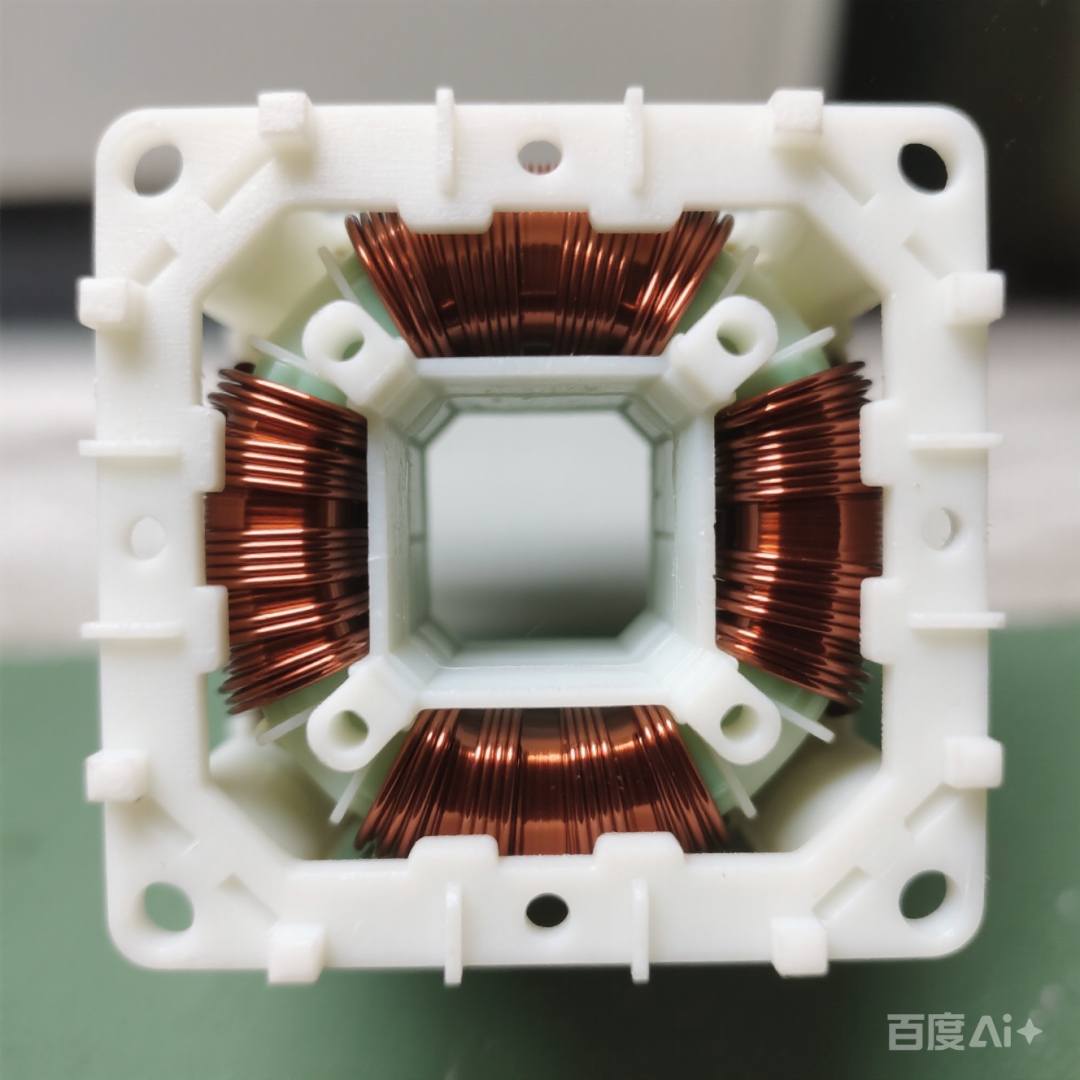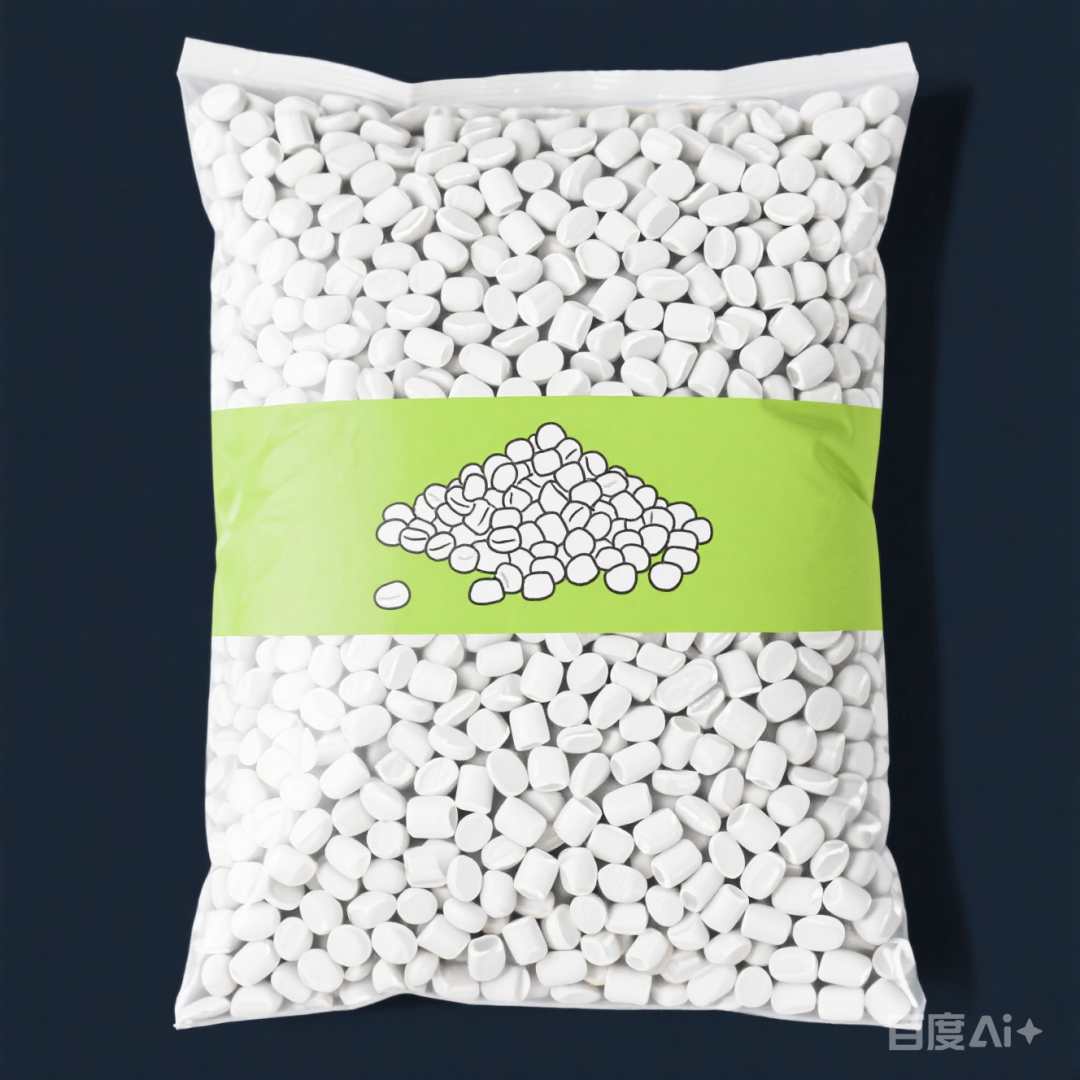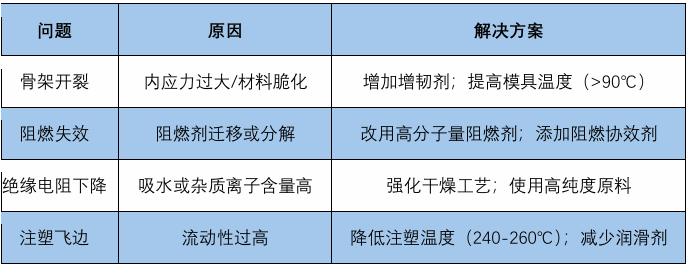Performance requirements, formulation design, and key considerations for modified pa6 used in transformer frames
Performance requirements, formulation design key points, and precautions for modified PA6 (Nylon 6) used in transformer bobbins:

Electrical performance
High CTI (Comparative Tracking Index)≥600V (to prevent carbonization breakdown under high voltage)
High insulation resistance>10¹³ Ω·cm (blocks leakage current)
Low dielectric constant/lossReduce energy loss at high frequencies.
Mechanical Strength
Flexural modulus >10 GPa (resistance to solenoid pressure)
Creep resistanceGood dimensional stability under long-term load.
3. Thermal Performance
Heat resistanceLong-term use temperature ≥120°C (short-term tolerance 180°C)
Heat Deflection Temperature (HDT):≥200°C(1.82MPa)
Flame retardancyUL94 V-0 rating (must meet IEC 60707 standard)
4. Dimensional Stability
Low water absorption rate<1.5% (Water absorption can lead to size expansion, affecting insulation)
Low shrinkage rateDeformation after injection molding <0.5%
Chemical resistance
Resistant to transformer oil, coolant, cleaning solvents (such as IPA)

2. Key Points of Formula Design

1. The balance between flame retardants and electrical performance
Avoid using halogen-containing flame retardants (which corrode copper wires and reduce CTI), and prefer a phosphorus-nitrogen synergistic system.
Flame retardants need to be finely dispersed to prevent local precipitation that could lead to insulation failure.
2. Glass fiber orientation issue
Optimize the mold runner design to adjust the orientation of glass fibers and reduce warping caused by anisotropic shrinkage (recommended mold temperature ≥80°C).
3. Water absorption rate control
Dry before injection molding: Vacuum dry at 100-110℃ for 4-6 hours, with a moisture content of <0.1%.
The finished product needs to be impregnated with paint or treated with a surface coating (such as epoxy resin) to block moisture penetration paths.
4. Precipitate Management
Strictly limit the use of small molecule lubricants to prevent them from precipitating at high temperatures, which could contaminate transformer oil or reduce its insulating properties.
5. Long-term reliability verification
Double 85 Test(85℃/85%RH, 1000h): Check the insulation resistance decay rate.
Thermal aging test(150°C, 2000h): Evaluate strength retention rate (must be >70%).
4. Typical Problems and Countermeasures

5. Material Selection and Replacement Suggestions
Cost-sensitive scenariosPA6+30% glass fiber (CTI ≥ 550V required)
High-frequency high-temperature scenarioPA66 (better heat resistance, but higher water absorption)
Ultra-thin wall frameworkLCP (extremely liquid but 5-8 times more expensive)
Through the above design points and process control, the modified PA6 can meet the stringent requirements of the framework for medium and high voltage transformers, balancing performance, cost, and reliability. Before mass production, it is essential to pass...IEC 60085Insulation material heat resistance ratingUL 1446(Insulation System Certification) Related Testing.
【Copyright and Disclaimer】The above information is collected and organized by PlastMatch. The copyright belongs to the original author. This article is reprinted for the purpose of providing more information, and it does not imply that PlastMatch endorses the views expressed in the article or guarantees its accuracy. If there are any errors in the source attribution or if your legitimate rights have been infringed, please contact us, and we will promptly correct or remove the content. If other media, websites, or individuals use the aforementioned content, they must clearly indicate the original source and origin of the work and assume legal responsibility on their own.
Most Popular
-

List Released! Mexico Announces 50% Tariff On 1,371 China Product Categories
-

EU Changes ELV Regulation Again: Recycled Plastic Content Dispute and Exclusion of Bio-Based Plastics
-

Clariant Unveils Cost-Cutting Plan Details, Plans to Shut Down Multiple Plants
-

Mexico officially imposes tariffs on 1,400 chinese products, with rates up to 50%
-

Nissan Cuts Production of New Leaf EV in Half Due to Battery Shortage






